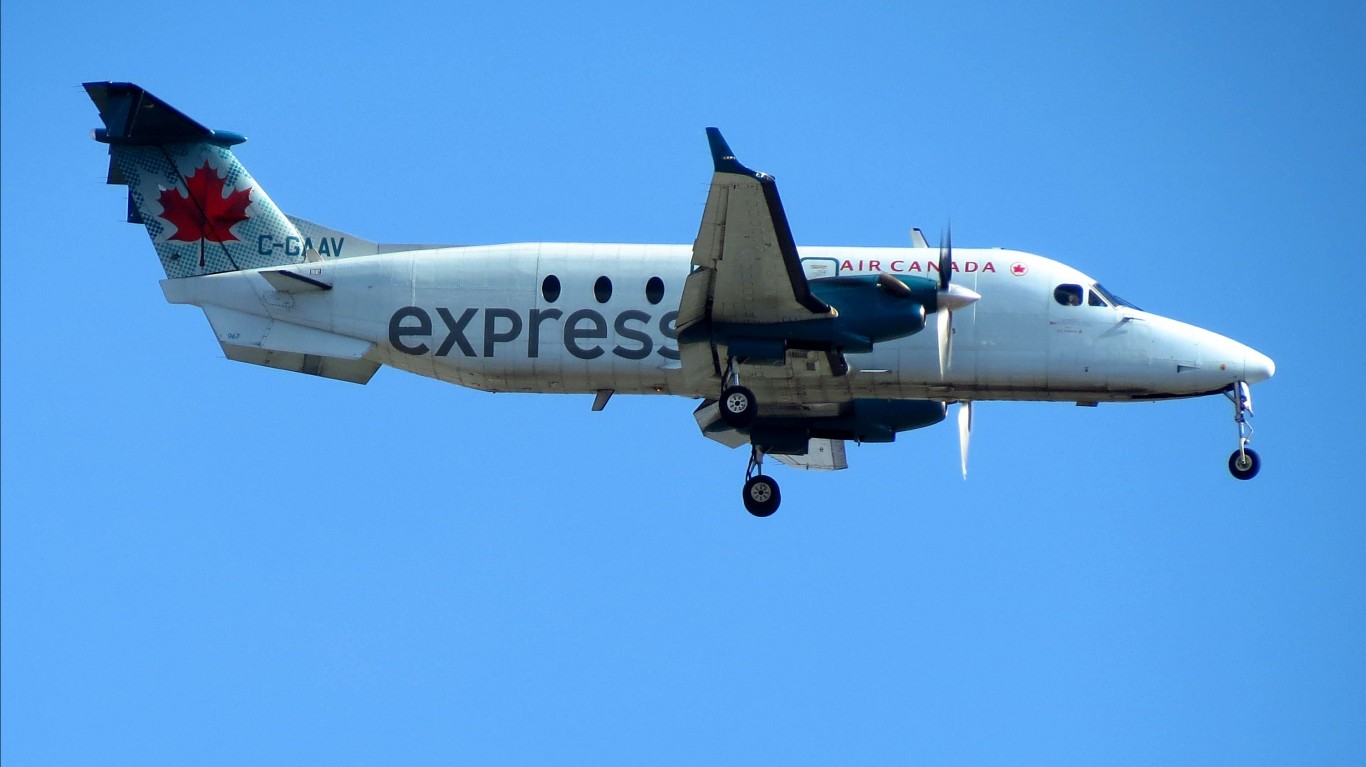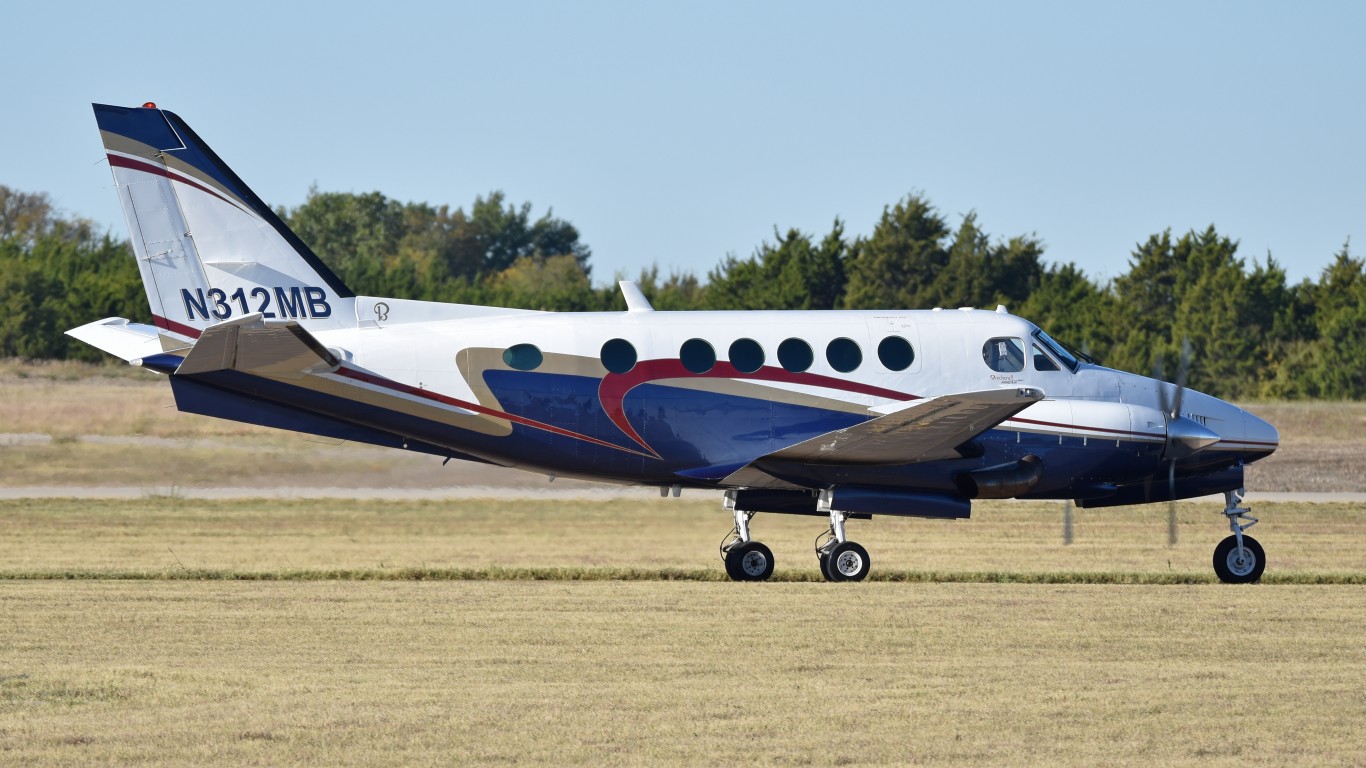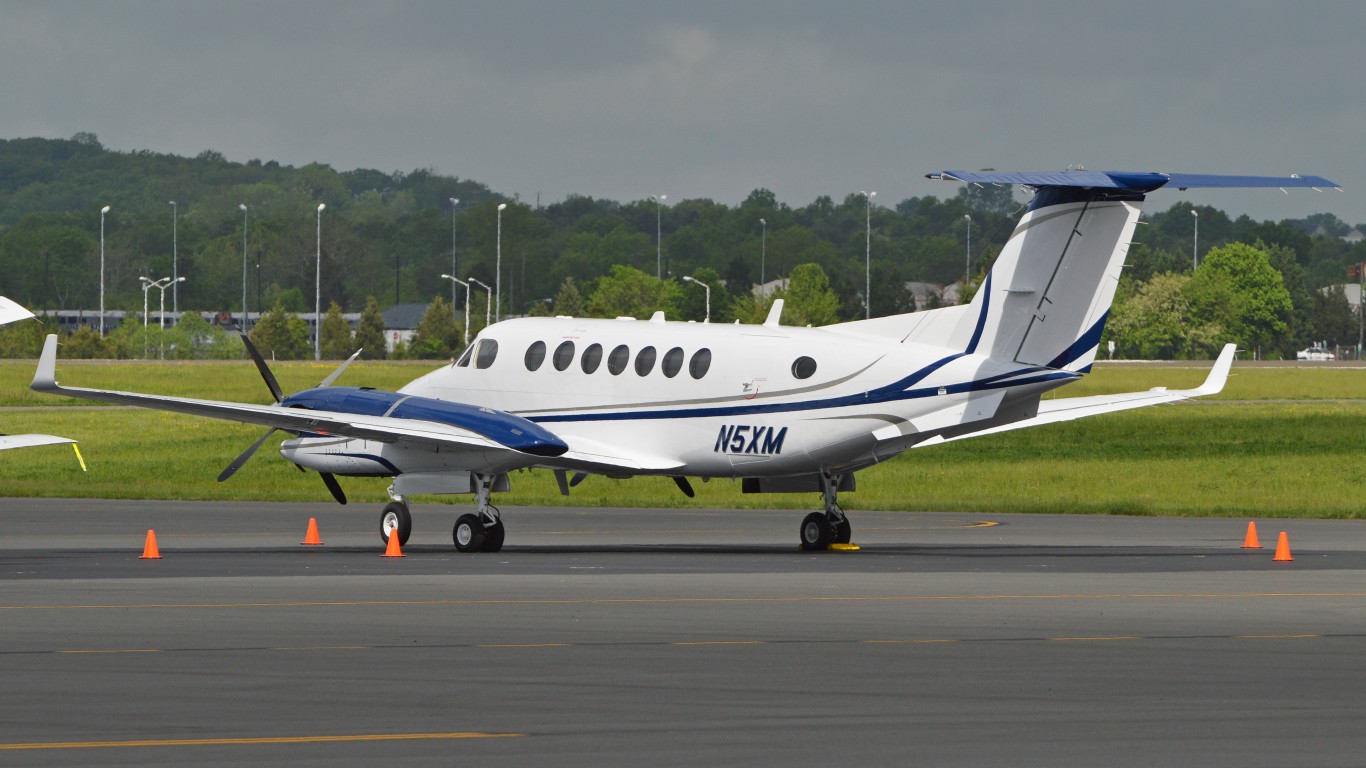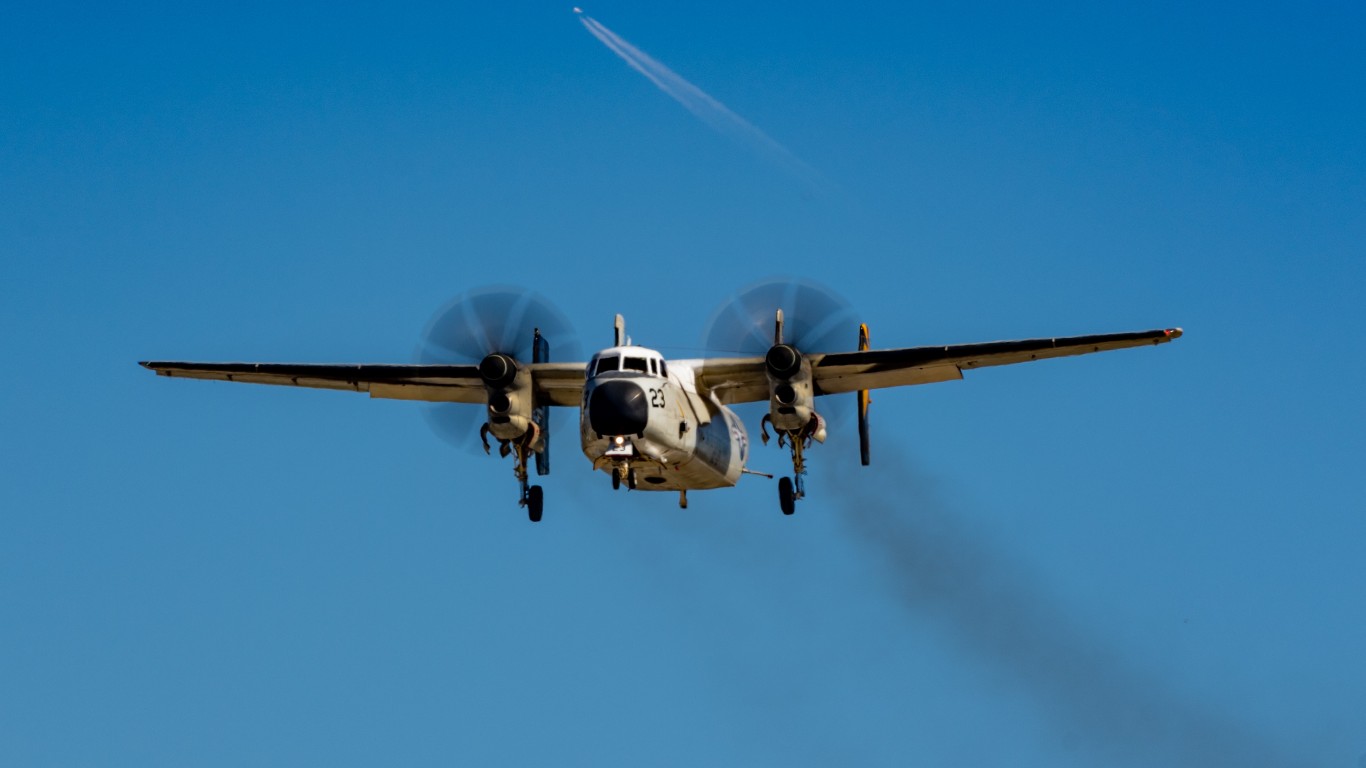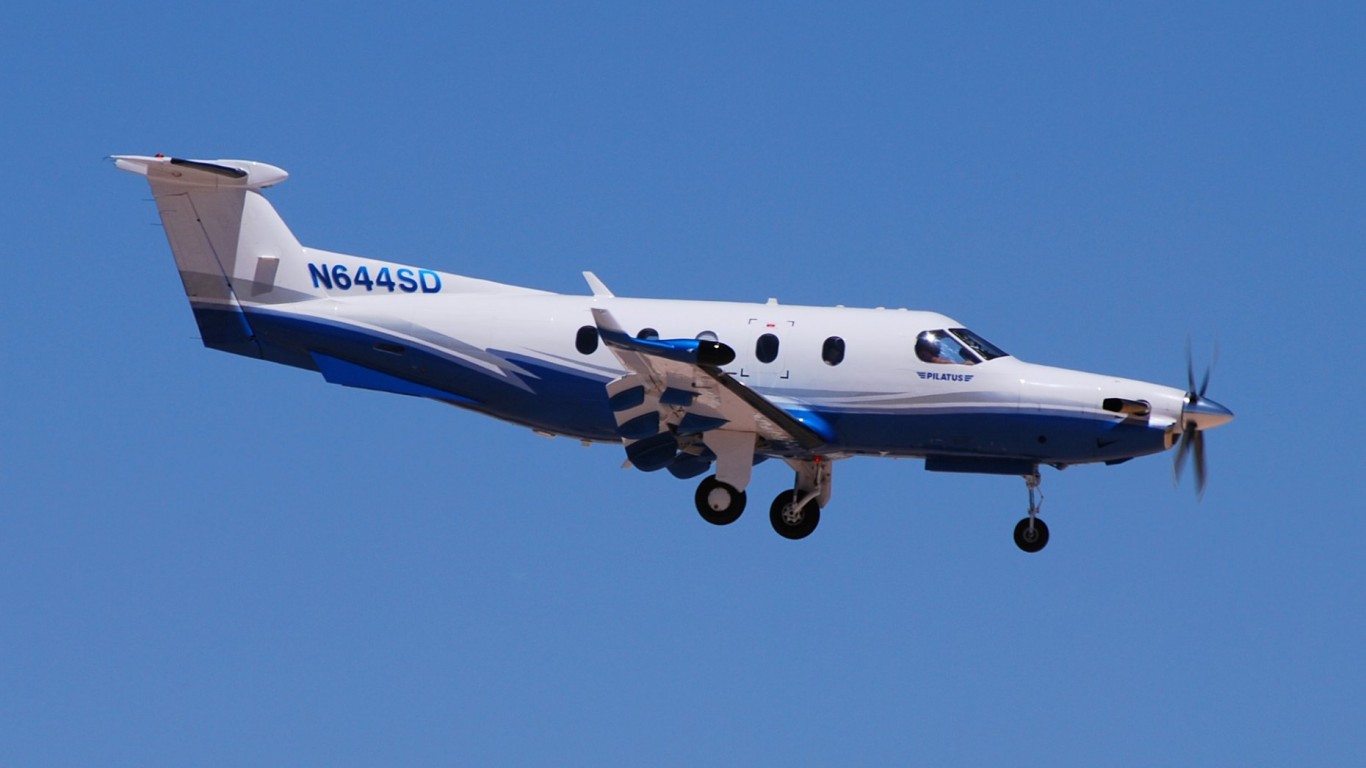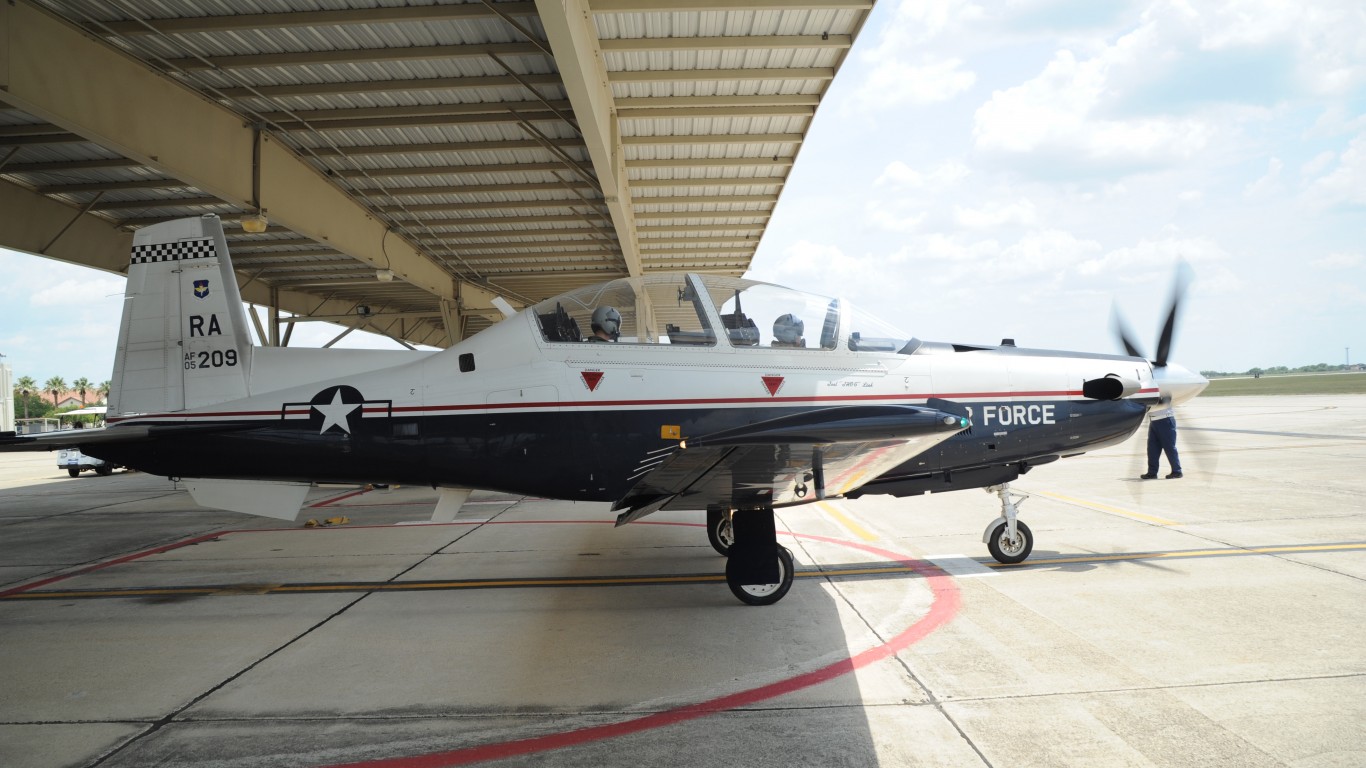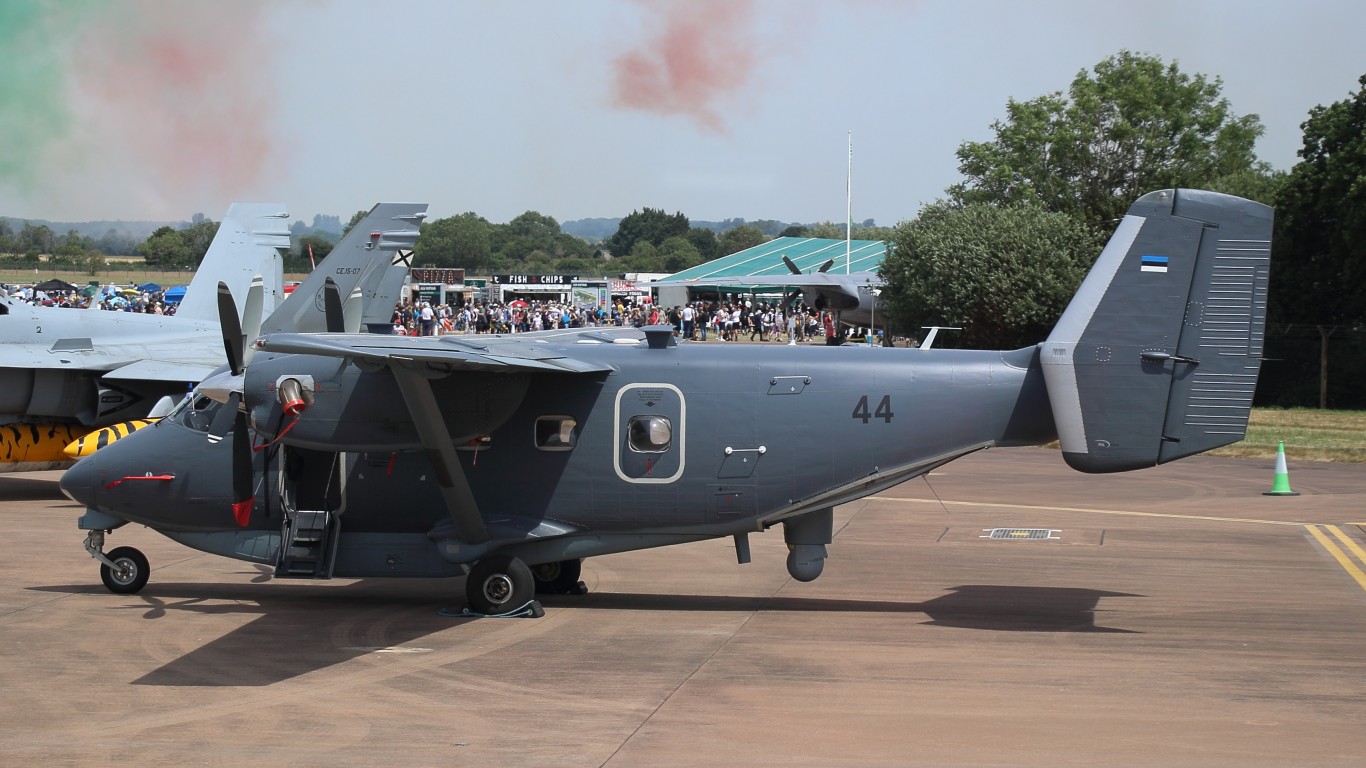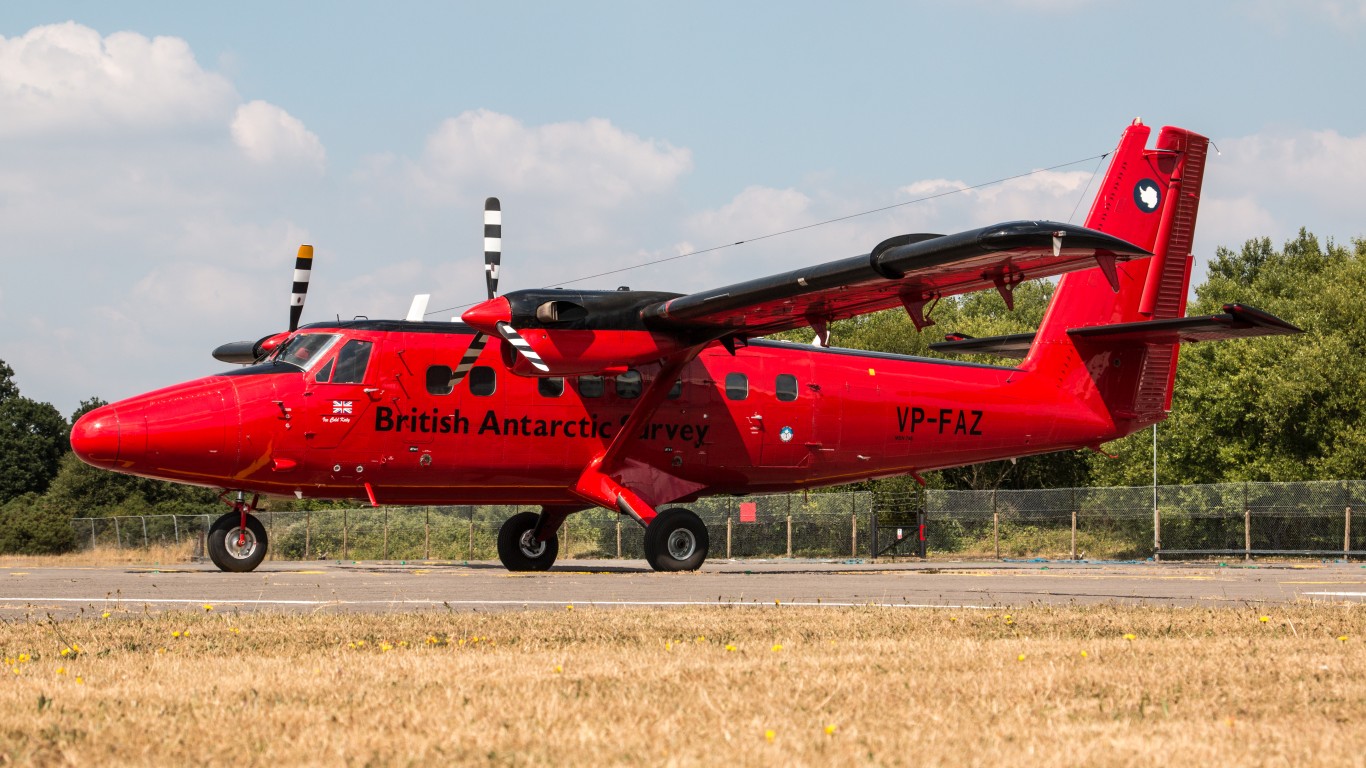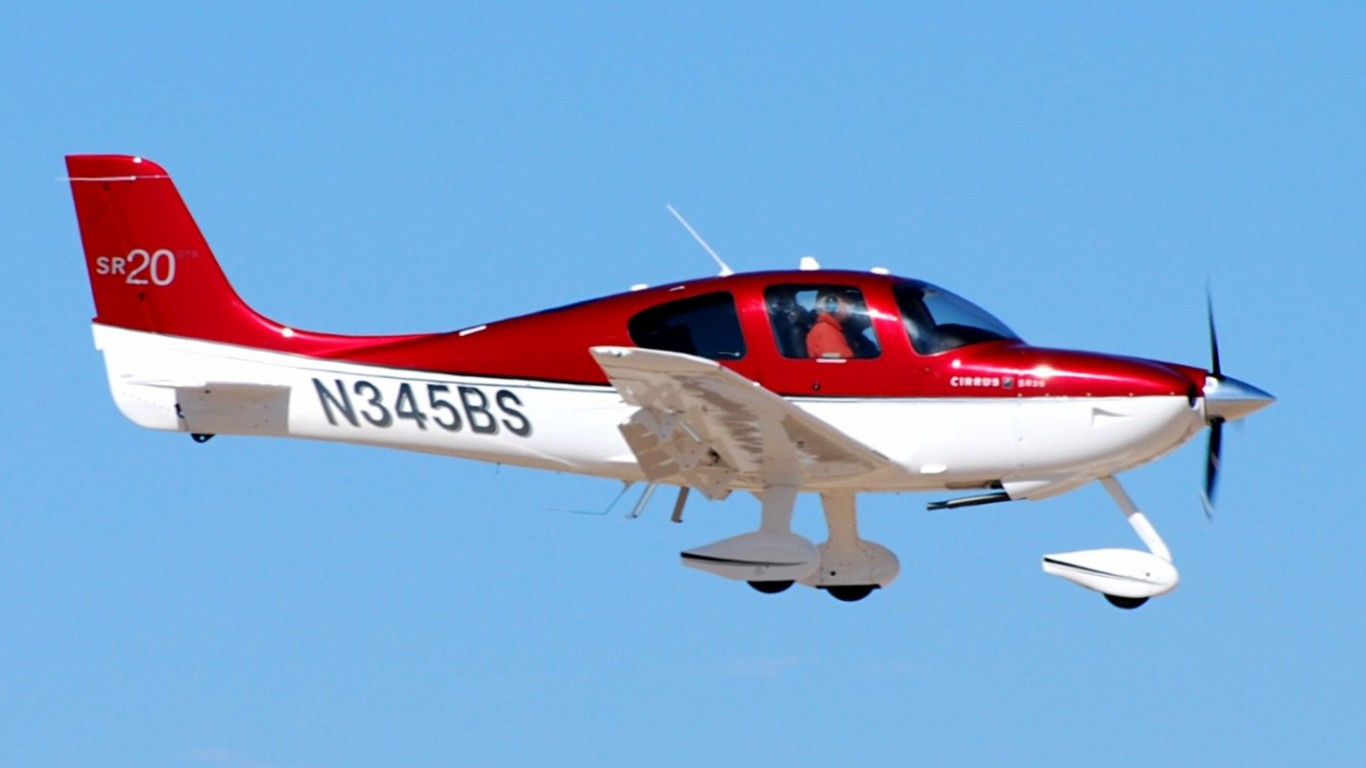
Slow speed aircraft may not be the most glamorous or exciting planes in the sky, but they are an essential part of many military operations. These aircraft are designed to operate at low speeds, which makes them ideal for tasks such as maritime patrol, reconnaissance, surveillance, and transportation, like we see in the Beechcraft Super King Air. Others, like the AC-130, can also provide close air support to ground troops on the battlefield.
In addition, slow-speed aircraft can be used for training, such as in the case of the Cirrus SR20, which is popular among the U.S. Air Force as a training aircraft and a means to get cadets up to speed for more advanced planes down the road. (On the other hand, these are the world’s 13 fastest fighter jets.)
To determine the slowest planes the U.S. armed forces use, 24/7 Wall St. reviewed a list of U.S. military aircraft produced by Military Factory, an online database of military vehicles, aircraft, arms, and more. Aircraft with top speeds lower than 350 miles per hour were ranked according to their top speed, from fastest to slowest. Supplemental information on military branches using the aircraft and the aircraft’s role came from the World Directory of Modern Military Aircraft. First flown dates came from both WDMMA and from Military Factory.
One example of a slow speed aircraft is the AC-130J, a variant of Lockheed’s Hercules transport plane. This aircraft’s top speed is just over 300 miles per hour, making it one of the slowest military planes in operation today. However, the AC-130J plays an important role in the U.S. military’s arsenal, as it provides close-air support in combat situations. Other variants of this plane have been used since the Vietnam era in each of the United States’ military conflicts.
This list includes planes in various categories such as trainers, transports, or special missions. The planes on this list are used across all of the U.S. military branches in varying degrees. Perhaps one of the biggest differentiating factors is the year that each plane was first flown, with some first flown more than half a century ago, while others began flying much more recently. (This is the U.S. Air Force’s oldest aircraft.)
Here’s a look at the 19 slowest planes in the U.S. military:
19. Beech 1900
> Top speed: 348 mph
> Category: Transports
> Military branch: US Army
> First flown: 1900
[in-text-ad]
18. Beechcraft King Air
> Top speed: 348 mph
> Category: Trainers
> Military branch: US Army
> First flown: 1963
17. Beechcraft Super King Air
> Top speed: 348 mph
> Category: Trainers, Transports, Special-Mission
> Military branch: US Navy, Air Force, Army, Marine Corps
> First flown: 1972
16. Grumman C-2 Greyhound
> Top speed: 331 mph
> Category: Transports
> Military branch: US Navy
> First flown: 1964
[in-text-ad-2]
15. Pilatus PC-12
> Top speed: 329 mph
> Category: Transports, Special-Mission
> Military branch: US Navy, Air Force
> First flown: 1991
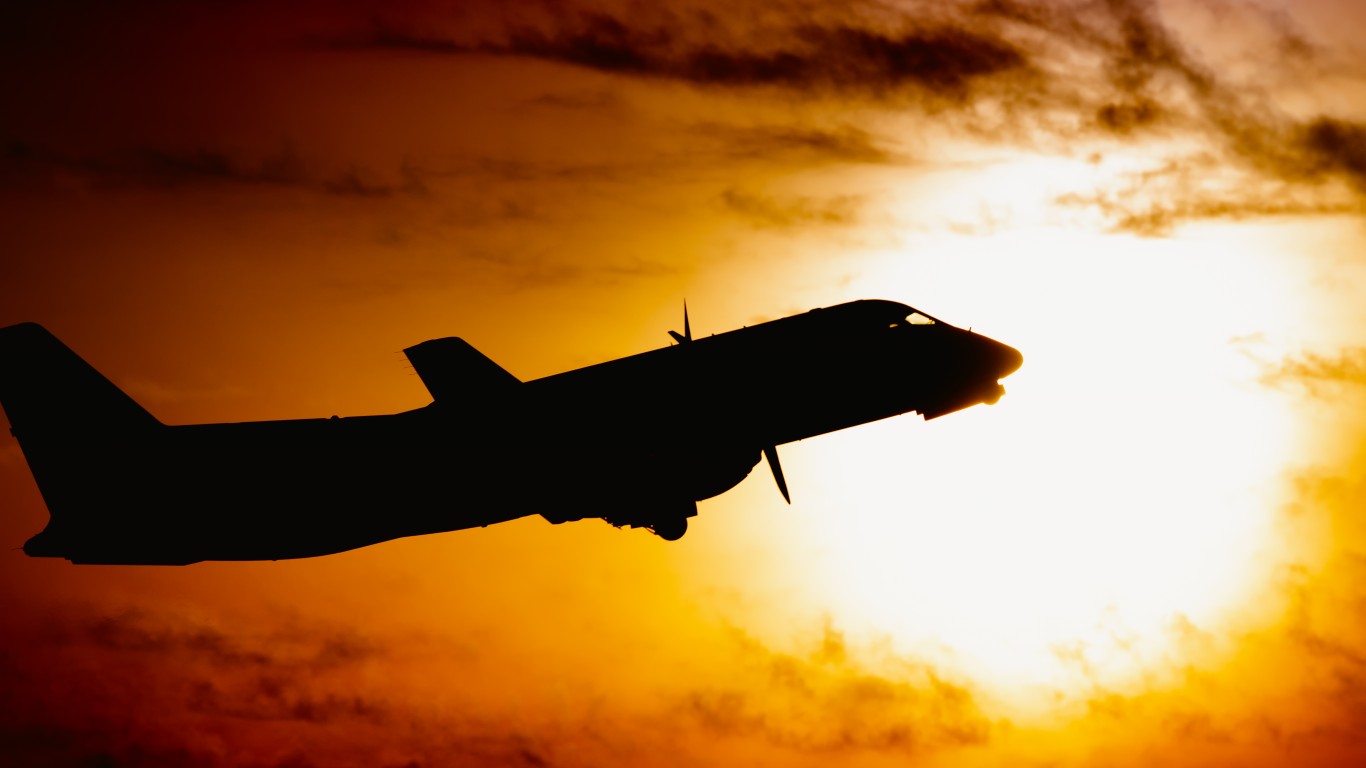
14. Saab 340
> Top speed: 326 mph
> Category: Trainers
> Military branch: US Navy
> First flown: 1983
[in-text-ad]
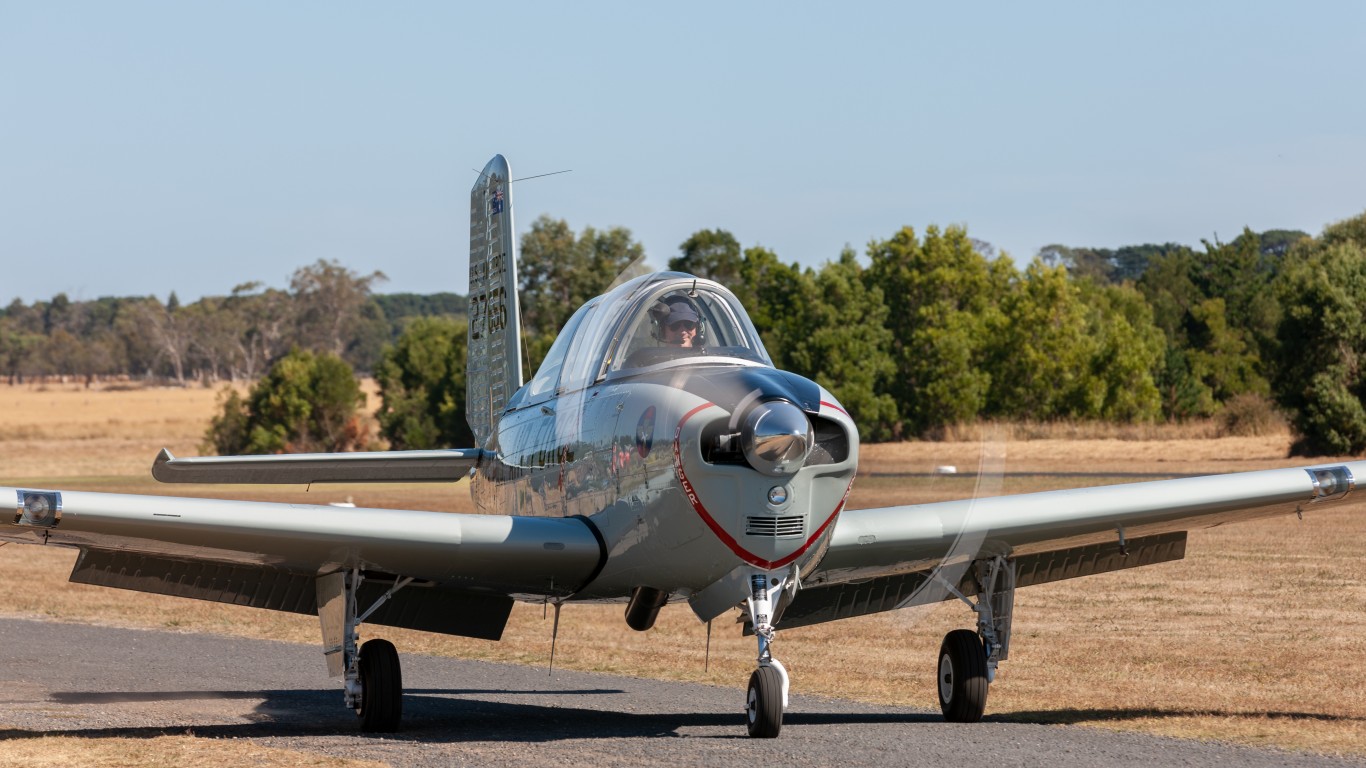
13. Beechcraft T-34 Mentor
> Top speed: 322 mph
> Category: Trainers
> Military branch: US Navy, Marine Corps
> First flown: 1948
12. Raytheon T-6 Texan II
> Top speed: 320 mph
> Category: Trainers
> Military branch: US Navy, Army, Air Force
> First flown: 1998

11. Lockheed AC-130
> Top speed: 300 mph
> Category: Close-Air Support
> Military branch: US Air Force
> First flown: 1966
[in-text-ad-2]
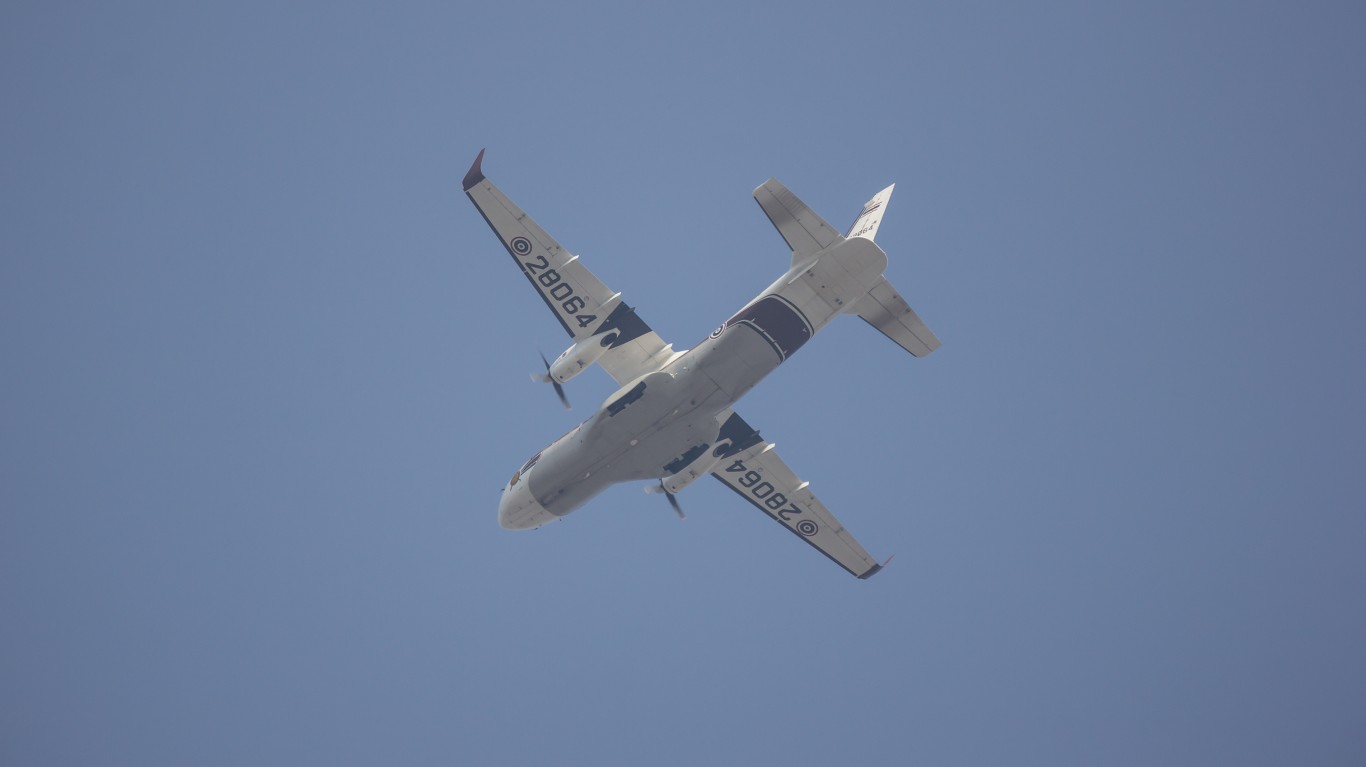
10. Airbus (EADS CASA) CN-235
> Top speed: 282 mph
> Category: Special-Mission
> Military branch: US Air Force
> First flown: 1983
9. de Havilland Canada DHC-7 Otter
> Top speed: 267 mph
> Category: Trainers
> Military branch: US Army
> First flown: 1975
[in-text-ad]

8. CASA C-212 Aviocar
> Top speed: 230 mph
> Category: Transports
> Military branch: US Army
> First flown: 1971
7. PZL M28 Skytruck
> Top speed: 221 mph
> Category: Transports
> Military branch: US Air Force
> First flown: 1984
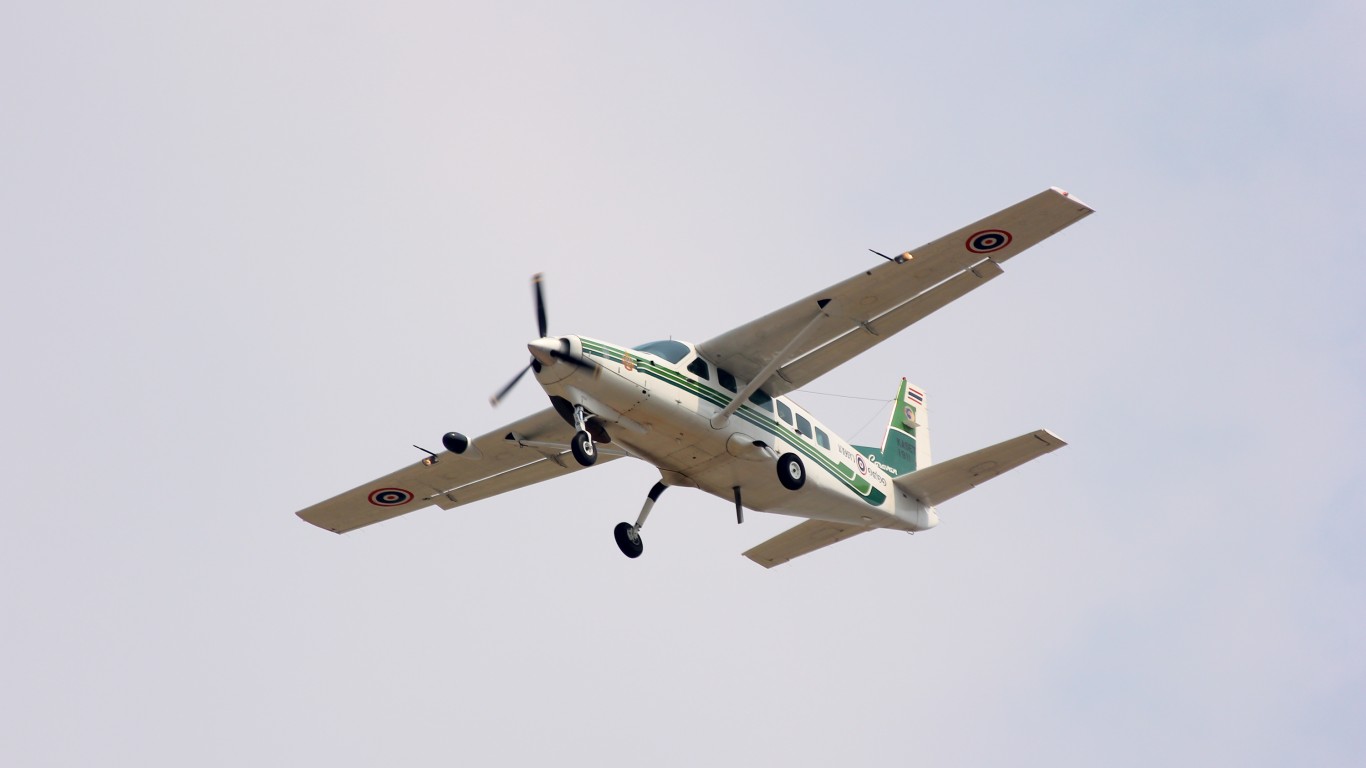
6. Cessna 208
> Top speed: 214 mph
> Category: Special-Mission, Transports
> Military branch: US Air Force, Army
> First flown: 1982
[in-text-ad-2]

5. Grob G120
> Top speed: 199 mph
> Category: Trainers
> Military branch: US Army, Air Force
> First flown: 1999
4. de Havilland Canada DHC-6 Twin Otter
> Top speed: 196 mph
> Category: Transports
> Military branch: US Army, Air Force
> First flown: 1965
[in-text-ad]
3. Cirrus SR20
> Top speed: 180 mph
> Category: Trainers
> Military branch: US Air Force
> First flown: 1995
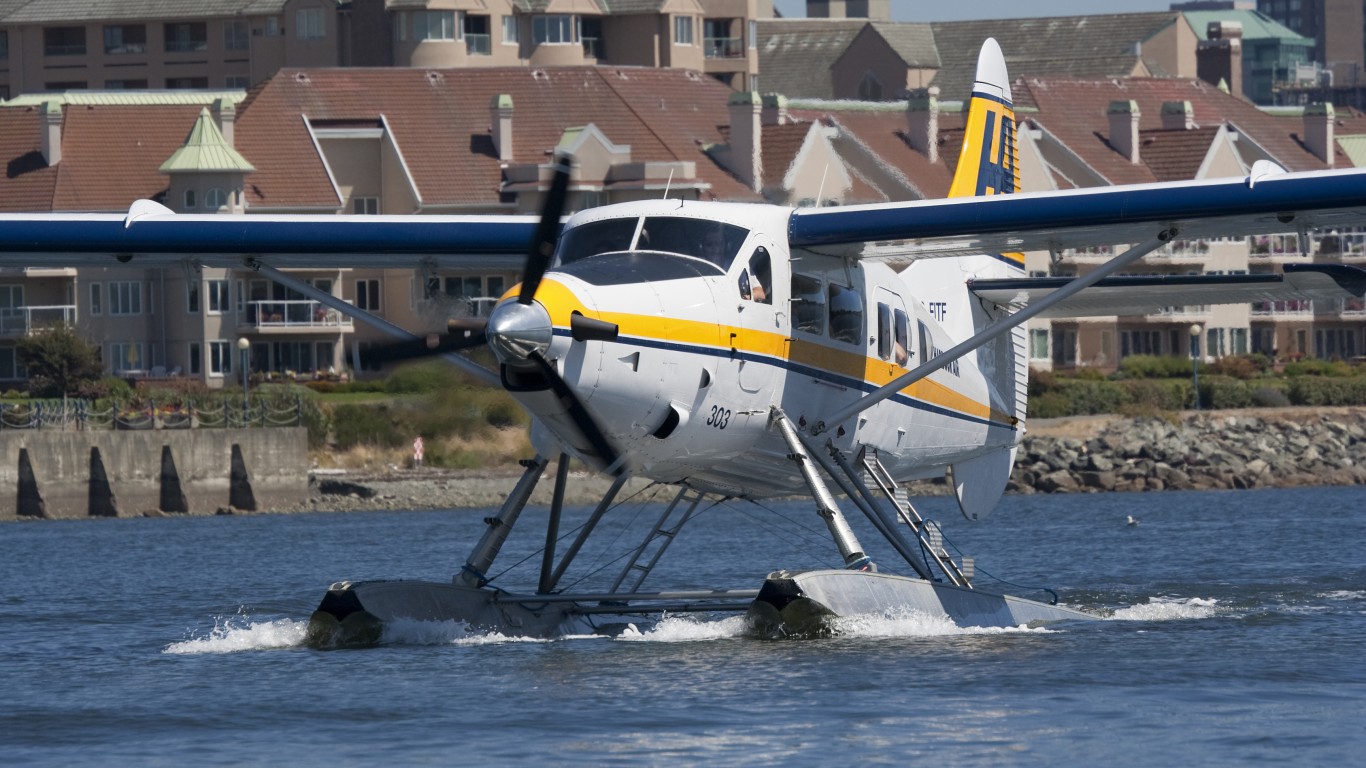
2. de Havilland Canada DHC-3 Otter
> Top speed: 160 mph
> Category: Trainers
> Military branch: US Navy
> First flown: 1951
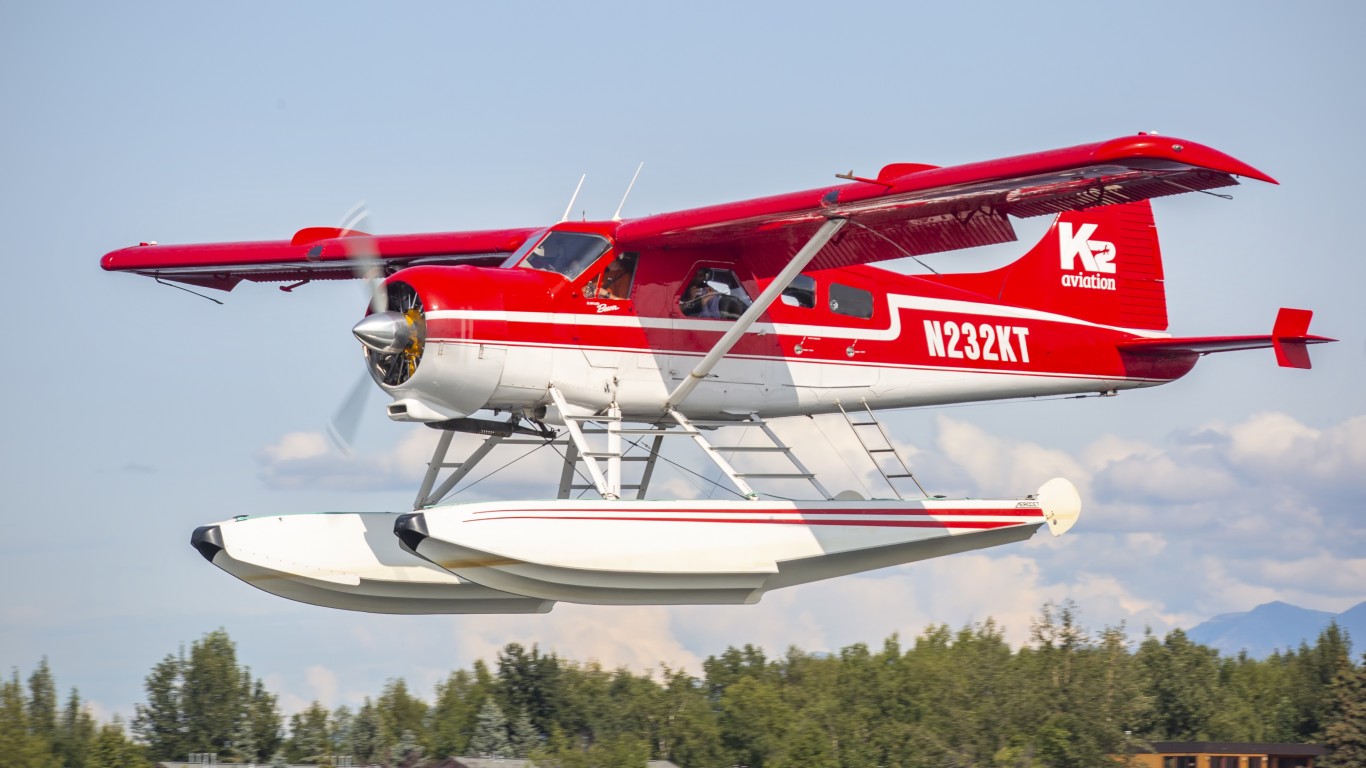
1. de Havilland Canada DHC-2 Beaver
> Top speed: 158 mph
> Category: Trainers
> Military branch: US Navy
> First flown: 1947
Credit Card Companies Are Doing Something Nuts
Credit card companies are at war. The biggest issuers are handing out free rewards and benefits to win the best customers.
It’s possible to find cards paying unlimited 1.5%, 2%, and even more today. That’s free money for qualified borrowers, and the type of thing that would be crazy to pass up. Those rewards can add up to thousands of dollars every year in free money, and include other benefits as well.
We’ve assembled some of the best credit cards for users today. Don’t miss these offers because they won’t be this good forever.
Flywheel Publishing has partnered with CardRatings for our coverage of credit card products. Flywheel Publishing and CardRatings may receive a commission from card issuers.
Thank you for reading! Have some feedback for us?
Contact the 24/7 Wall St. editorial team.
